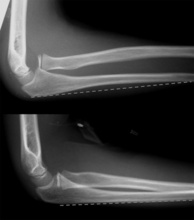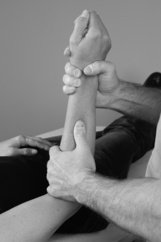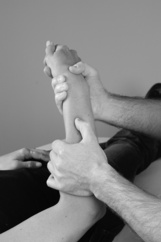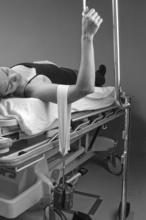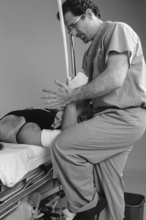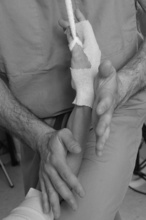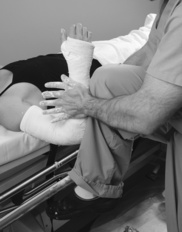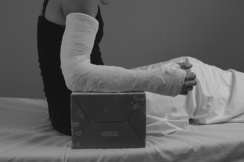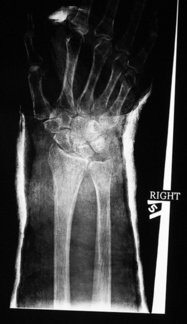Chapter 10 Forearm, Wrist, and Hand Reduction
Forearm fractures
Overview
1. Fractures of both bones of the forearm (Figure 10-1) should be reduced anatomically (except in children younger than 12 years) to preserve forearm rotation.
2. A Monteggia fracture is a combination of a radial head dislocation and a fracture of the ulna. The vast majority of Monteggia fractures should be treated surgically.
a. Anatomic reduction of the ulnar fracture often results in spontaneous reduction of the radiocapitellar dislocation.
b. In children, a greenstick fracture of the ulna may occur or the ulna may plastically deform, and the radial head dislocation is often missed (Figure 10-2).
3. A Galeazzi fracture is a combination of a radial fracture and a distal radioulnar joint dislocation.
4. Nightstick fractures of the diaphyseal ulna can accommodate 10 degrees of angulation and 50% translation.
Precautions
2. Do not use an intravenous (IV) stand that is attached to the ceiling unless it is specifically designed to handle large weights.
Pearls
1. Patient positioning is key to obtaining appropriate traction. Strict positioning of the shoulder to 90 degrees and flexion of the elbow to 90 degrees allows perfectly longitudinal traction to be applied through the fracture site.
3. Forewarn patients that their index and long fingers may hurt more than their forearms by virtue of the finger trap.
a. Also inform patients that their fingers will likely turn blue but that this symptom is normal, expected, and will resolve shortly after the finger traps are removed.
Improvisation
2. If supplies are limited, taping the forearm to a stiff board will suffice until definitive management can be arranged.
3. Alternative reduction methods can be attempted if no traction is available.
a. Grasp the proximal forearm and the distal forearm with the thumb of the proximal hand just proximal to the fracture site (Figure 10-3).
Basic Technique
Detailed Technique
1. Position the patient:
a. The patient should be supine on the stretcher with his or her shoulder girdle entirely off the side.
3. Prepare finger traps:
a. Attach a rolled gauze finger trap (Chapter 8) to the index and long fingers using a double-ring construct (Figure 10-5).
5. Obtain traction views (optional). Portable anteroposterior (AP) and lateral radiographs of the forearm, wrist, and elbow can be obtained in traction to evaluate the reduction.
7. Apply a splint (see Chapter 13) or a cast (see Chapter 13) while maintaining traction.
b. Flatten the ulnar border of the cast/splint with your shin (Figure 10-10) or a flat surface (Figure 10-11).
Distal radius fracture reduction
Overview
1. Many distal radius fractures, particularly in children, can be treated with closed reduction and casting (Figure 10-12).
3. This procedure can be performed by a single individual when an IV pole and traction weights are used.
Precautions
1. Do not use an IV stand attached to the ceiling unless it is specifically designed to handle large weights.
Pearls
1. Patient positioning is key to obtaining appropriate traction. Strict positioning of the shoulder to 90 degrees and flexion of the elbow to 90 degrees allows perfectly longitudinal traction to be applied through the fracture site.
3. Forewarn patients that their thumb may hurt more than their wrist by virtue of the finger trap.
a. Also inform patients that their thumb will likely turn blue but that this symptom is normal, expected, and will resolve shortly after the finger traps are removed.
Improvisation
1. Alternative reduction methods can be attempted if traction is not available or is ineffective.
a. Alternative 1: Use your thenar eminences to “contour” the forearm and apply traction if minimal displacement is present (Figure 10-13).


